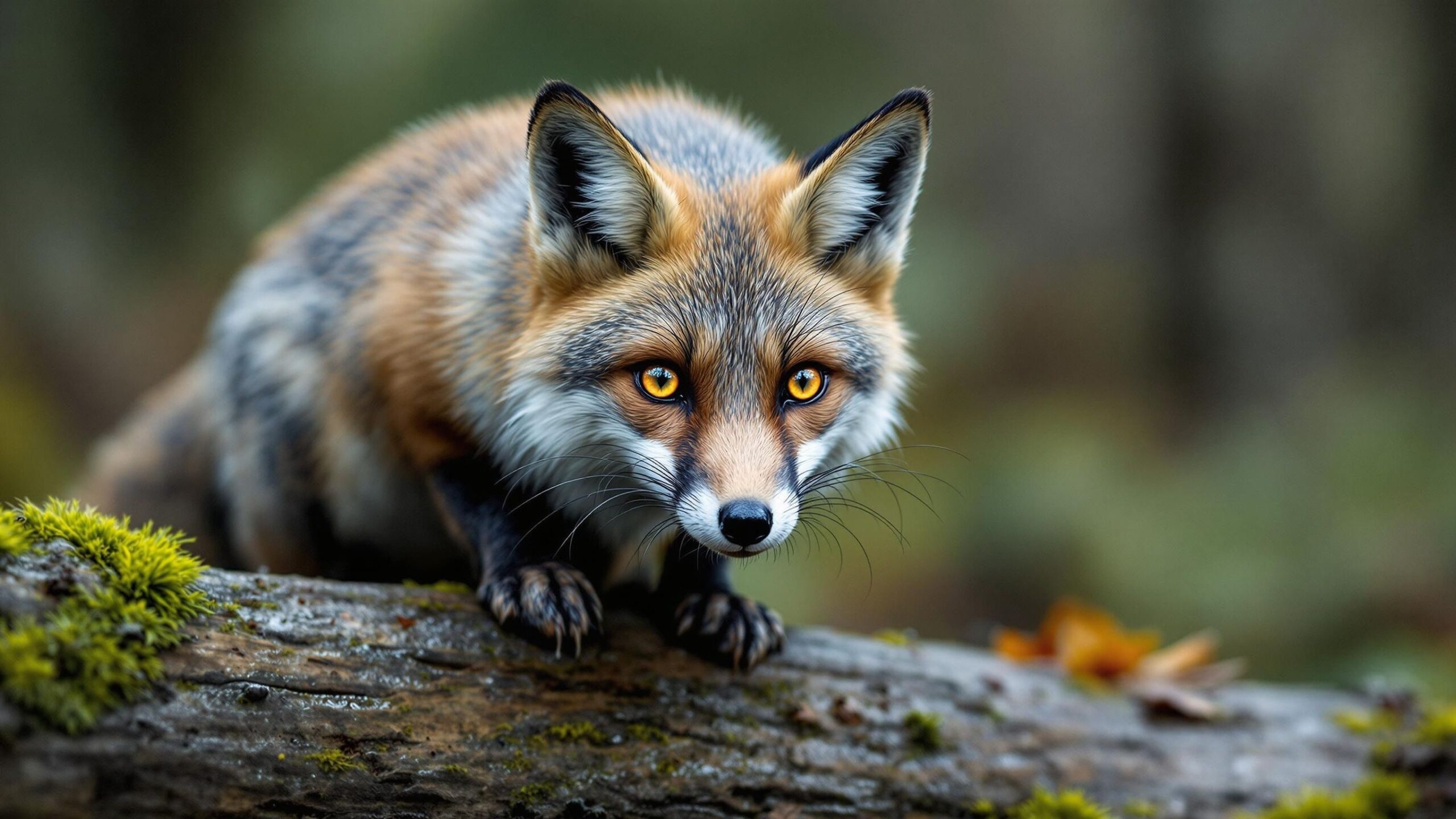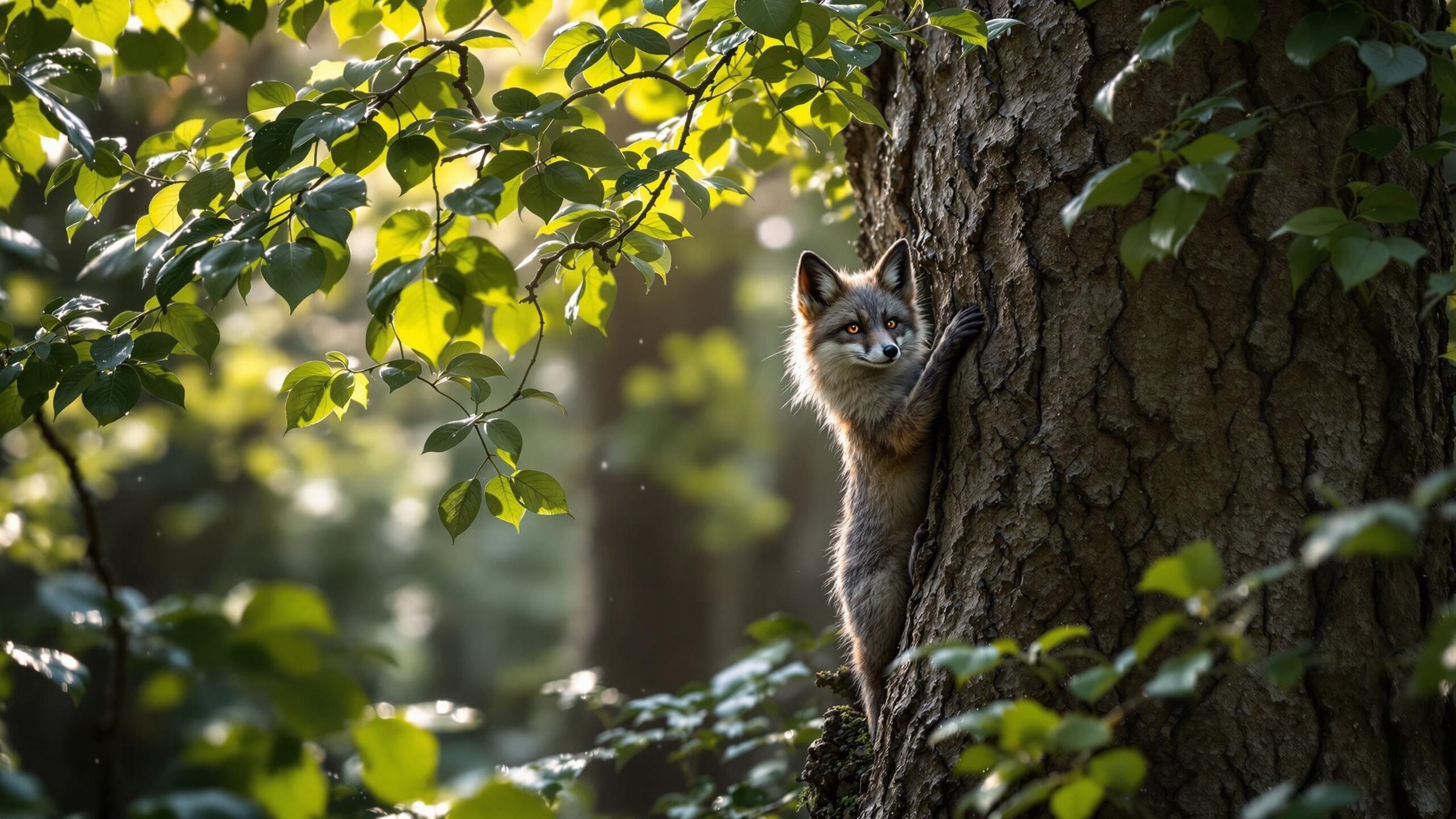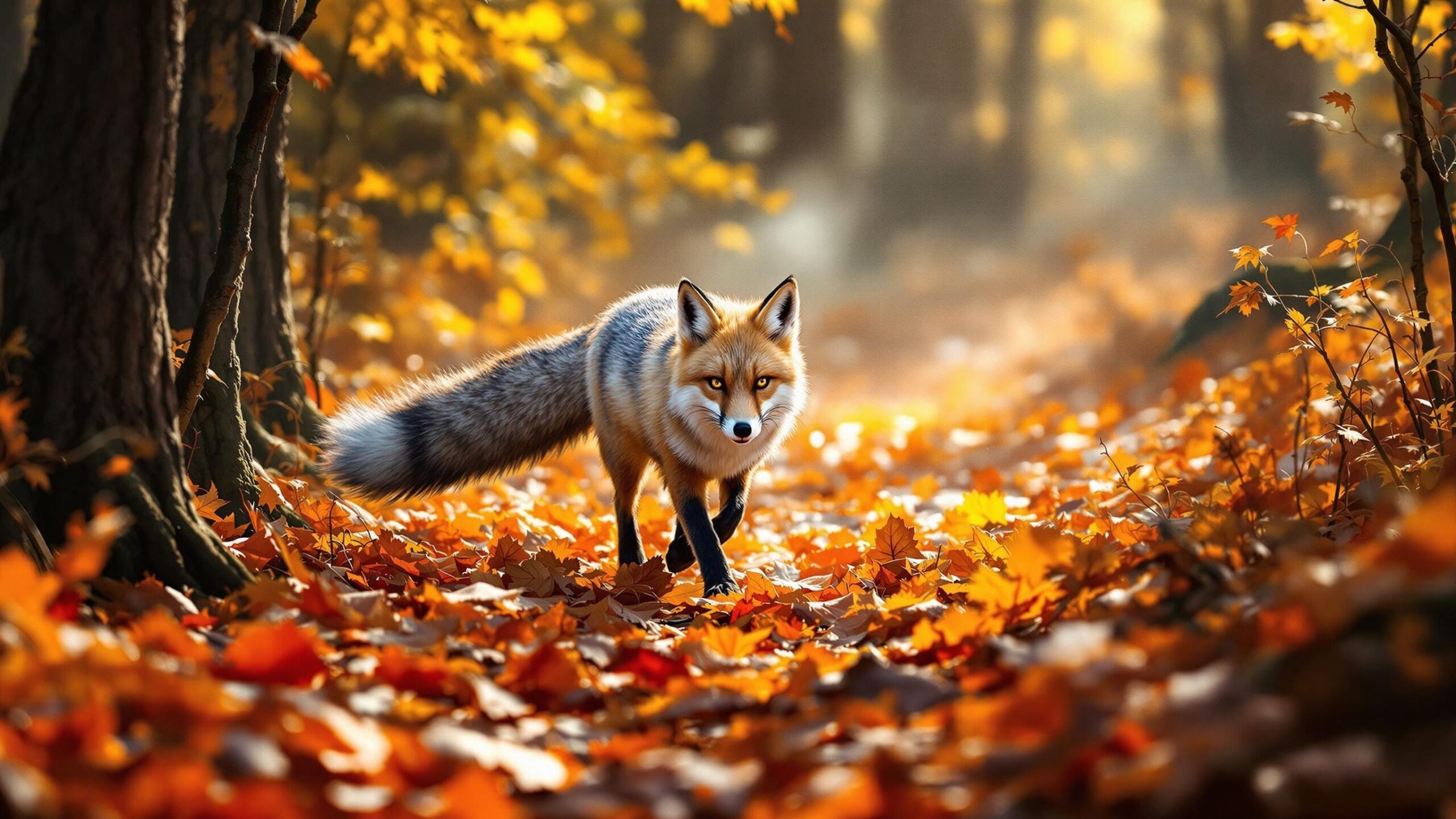The Gray Fox: Elusive Acrobat of the Forest
Among the quiet woodlands, dense brushlands, and rocky canyons of North and Central America lives a fox unlike any other—the Gray Fox. With its grizzled coat, sharp eyes, and remarkable climbing ability, the Gray Fox (Urocyon cinereoargenteus) stands apart as a master of both forest floor and treetop. It is a creature of stealth and adaptability, one whose ancient lineage makes it one of the oldest living fox species in the Western Hemisphere.
Known for its elusive nature and versatile habits, the Gray Fox is a marvel of evolutionary success. While not as widely recognized as its red-furred cousin, this fox is no less fascinating. Let’s explore the unique life of Urocyon cinereoargenteus, from its tree-scaling talents and solitary ways to its essential role in ecosystems across the Americas.
Introducing Urocyon cinereoargenteus: A Name Rooted in Silver
The Gray Fox’s scientific name reveals a lot about its appearance. Urocyon means “tailed dog,” and cinereoargenteus translates to “ashen silver,” a reference to the silvery-gray coloration of its coat. This fox is part of the Canidae family, which includes wolves, coyotes, jackals, and domestic dogs. However, it belongs to its own unique genus, Urocyon, alongside only one other living species: the diminutive island gray fox of California’s Channel Islands.
Despite its close relation to canines, the Gray Fox has several traits that align it more with felines than its dog-like relatives. Chief among these is its incredible ability to climb trees—a rare feat among wild canids. In fact, the Gray Fox is the only American canid capable of tree climbing, using its sharp, hooked claws and rotating forearms to scale trunks and leap between branches. Its range spans southern Canada, the United States, Mexico, Central America, and parts of northern South America. From deserts to deciduous forests, this adaptable mammal makes itself at home in a variety of environments.
Distinctive Features: Beauty in Subtle Tones
The Gray Fox may not possess the fiery coat of the red fox, but it has its own understated beauty. Its back and tail are covered in a peppered mix of silver, black, and white guard hairs. Rusty-red fur graces its neck, flanks, and the backs of its ears, while a contrasting black stripe runs along the length of its bushy tail, ending in a black tip.
Adult Gray Foxes typically weigh between 7 and 15 pounds and measure around 30 to 44 inches in total length, including their tail, which accounts for about a third of their body length. Their short, pointed muzzle, erect ears, and almond-shaped eyes give them a curious yet alert appearance. Their retractable claws and rotating wrists make them nimble climbers—a skill used for foraging, evading predators, or resting in tree hollows during the day. Unlike red foxes, which rely on speed and cunning, the Gray Fox leans on stealth, elevation, and camouflage.
The Acrobat of the Canopy: Climbing Fox of the Americas
The Gray Fox’s climbing prowess sets it apart in the fox world. It can ascend vertical tree trunks, leap from limb to limb, and descend with remarkable control—sometimes headfirst like a squirrel. This behavior is not a party trick; it’s a vital survival strategy. In dense forest or scrubland, trees offer refuge from predators like coyotes and bobcats, both of which are faster and more powerful on the ground. By climbing, the Gray Fox gains access to safety, rest spots, and even food sources such as birds, insects, or fruit.
During the heat of summer, a high perch in a tree can provide a cooler place to nap away from ground-level predators and biting insects. In autumn, the fox may climb to access ripe fruit or to survey its territory from above. Few people ever spot a Gray Fox in a tree, but camera traps and wildlife researchers have confirmed that these foxes spend more time aloft than previously imagined. Their arboreal ability is a key reason they can thrive in rugged or overgrown environments.
Where the Gray Fox Roams: A Habitat for All Seasons
Gray Foxes are found across an expansive range. In the United States, they inhabit wooded areas from the East Coast to California, with populations especially dense in the southern and central states. In Mexico and Central America, they live in both dry scrublands and tropical forests. They are equally at home in deciduous woodlands, swamps, desert canyons, and even semi-urban parks and agricultural edges.
What all these habitats have in common is cover—dense vegetation, rock piles, and fallen logs that offer concealment and hunting opportunities. The Gray Fox avoids open terrain where predators might spot it and instead navigates through shadows and thickets. They are crepuscular, meaning they are most active at dawn and dusk, though their schedules can shift to accommodate local conditions. In hotter climates, for instance, Gray Foxes may become more nocturnal. Despite their adaptability, they are generally solitary and elusive, often unseen even in areas where they are relatively common.

Feeding in the Forest: An Omnivore’s Buffet
The Gray Fox is an opportunistic omnivore with a diverse diet. Small mammals like rabbits, mice, voles, and squirrels make up a significant portion of their diet, particularly in cooler months. They are skilled hunters, capable of stalking or ambushing prey with quiet precision. But the Gray Fox’s menu is broader than most expect. It regularly eats insects such as grasshoppers, crickets, and beetles, and it supplements its diet with seasonal fruits, nuts, and berries. In late summer and fall, persimmons, apples, grapes, and acorns become important food sources.
This dietary flexibility allows the Gray Fox to adjust to changing seasonal conditions and explains its presence in both wild and suburban environments. It may scavenge roadkill or raid chicken coops, though such incidents are rare and often exaggerated. Its strong stomach and adaptability make it a true generalist—a survival trait that has helped it weather centuries of environmental change.
Life Cycle and Reproduction: A Quiet Family Affair
Gray Foxes form monogamous pairs during the breeding season, which typically begins in late winter. Courtship is subtle, with vocalizations, scent marking, and increased pair bonding observed in February and March. After a gestation period of about 53 days, the female gives birth to a litter of one to seven pups, most commonly around four. Dens are usually constructed in hollow logs, rocky crevices, or underground burrows, sometimes reusing spaces left by other animals. The female remains with the pups in the den while the male hunts and brings back food. This cooperative parenting helps ensure pup survival, especially during the first critical weeks.
Pups open their eyes after about two weeks and begin to emerge from the den by one month of age. By the time they are three months old, they begin to hunt alongside their parents and learn the routes, dangers, and resources of their home range. Young foxes disperse in the fall, seeking their own territories. Some may travel several miles to establish themselves, while others stay close if resources and space allow.
Social Behavior and Communication
Gray Foxes are generally solitary outside of mating season and while raising young. They maintain well-defined territories marked with urine and feces. Home ranges can vary in size from a few dozen to several hundred acres depending on resource availability.
While not as vocal as some other canids, Gray Foxes communicate using a range of barks, yelps, and growls. Vocalizations are typically used during mating season, to warn off intruders, or between mothers and pups. They also rely on scent glands and body language to express dominance or submission. Unlike red foxes, which are often seen in open fields or near roads, Gray Foxes prefer to remain hidden, moving with stealth and precision through their chosen habitat. Their secretive nature adds to their mystique and explains why so many people live near Gray Foxes without ever knowing it.
Role in the Ecosystem: The Stealthy Regulator
The Gray Fox plays a vital role in the health of ecosystems. As a mid-level predator, it helps control populations of rodents, insects, and small mammals. This reduces crop damage and limits the spread of diseases carried by these animals. Its habit of eating fruit also turns the Gray Fox into a seed disperser. By consuming and later defecating seeds from native fruits, it contributes to the regeneration of plant life—an overlooked but important ecological service.
The fox itself is prey for larger carnivores, including coyotes, bobcats, great horned owls, and golden eagles. In this way, it occupies a central role in the food web, balancing predator-prey dynamics. Its presence is a marker of a healthy, functioning ecosystem. Areas with stable Gray Fox populations tend to have a rich mix of vegetation, prey species, and predator diversity.
Conservation and Threats: A Quiet Struggle
The Gray Fox is currently listed as a species of Least Concern by the International Union for Conservation of Nature (IUCN), thanks to its wide range and adaptability. However, this does not mean it is without threats. Habitat loss from development, road construction, and agriculture is an ongoing concern. Urban sprawl can fragment territories, making it harder for foxes to find mates, shelter, or food. Vehicle collisions are a significant cause of mortality, especially in regions where roadways bisect forest corridors.
Coyotes, whose populations have expanded due to human land use changes, are also a major threat. They outcompete or directly kill Gray Foxes in many regions, forcing them to retreat to less desirable habitats. In some areas, disease such as canine distemper or rabies can affect local populations. Despite this, the species continues to show resilience, particularly in forested and brushy environments where it can outmaneuver its larger competitors. Conservation efforts focus on preserving natural habitats, maintaining wildlife corridors, and promoting coexistence through education and responsible land management.

The Gray Fox and Human Culture
Unlike the red fox, which has starred in myths and fables across Europe and Asia, the Gray Fox is a quieter figure in folklore. Among Native American tribes, however, it has appeared as both a guide and a trickster—respected for its stealth and intelligence.
In some parts of rural North and Central America, the Gray Fox has been hunted for its fur, though its small size and shy nature mean it has never been a major target for the fur trade. More recently, it has gained recognition among wildlife enthusiasts and photographers who appreciate its elusive charm and important ecological role. Urban and suburban residents occasionally encounter Gray Foxes in parks, greenbelts, or along trails, leading to greater public awareness and curiosity about this lesser-known species.
The Fox Few Ever See
The Gray Fox is a creature of paradox: ancient yet modern, common yet rarely seen, shy yet fiercely independent. It lives its life mostly in secret, tucked beneath fallen logs, trotting along forest trails, or resting silently in the branches above. Its world is one of subtle movements, clever decisions, and quiet resilience.
In a time when so many wild animals struggle to coexist with humans, the Gray Fox continues to endure—not by confrontation, but through quiet adaptation. It reminds us that nature still has its secrets and that even in our backyards or local woodlands, the wild world continues just out of sight. To protect the Gray Fox is to preserve not only a species but a way of life—a way of moving through the world that values silence, skill, and survival in harmony with the land.

